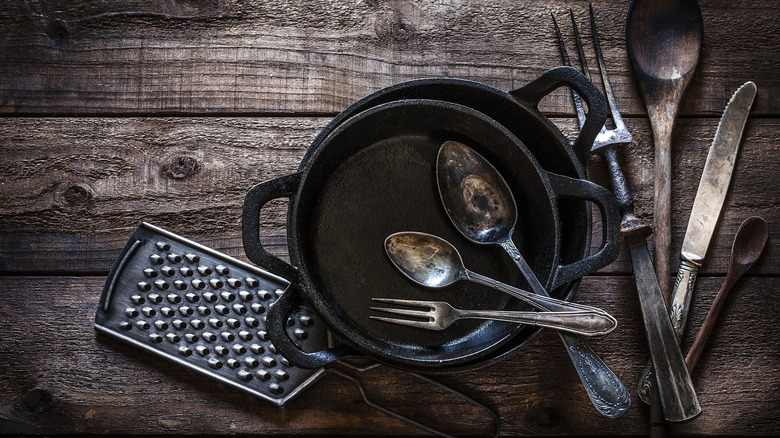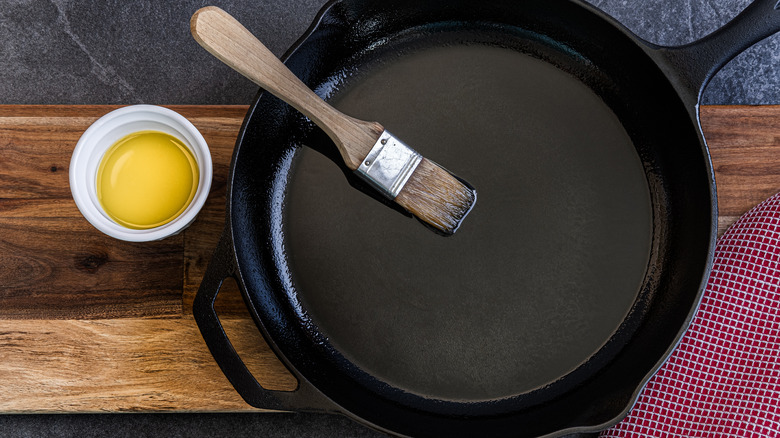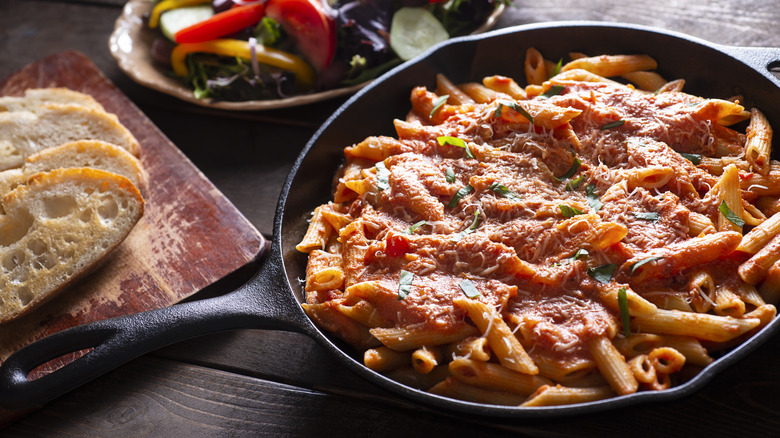Here's How Often You Should Be Seasoning Your Cast Iron Skillet
Cast iron pans require a bit more labor and maintenance than your average piece of cookware, but the end result is ultimately worth it. Cast iron skillets are compatible with all sorts of recipes, making them a highly versatile tool in the kitchen. To get the most out of cast iron, the material requires seasoning, which is the process of adding oil and applying heat to the cookware. Seasoning is essential to preventing food from sticking to the metal, and it's a process you'll need to repeat to ensure you're satisfied with the outcome of your cast iron creations.
So, how often must cast iron be seasoned? Your best bet is to run through the process on a monthly basis, as regular re-seasoning keeps the smooth, non-stick surface intact. That said, how much you use the skillet is an important factor to consider, as heavy use might require more frequent seasoning. In this case, it might be a good idea to season the pan after every use.
Why seasoning cast iron is crucial
There's actually a scientific component to cast iron seasoning, as explained by Healthline. By applying heat to the oil inside the skillet, you are polymerizing the fat within the oil, which is a fancy way of saying you're changing the consistency of the oil to a solid. This solid form of fat seeps into the tiny cracks and crevices of cast iron, which then creates a dependable non-stick coating. To effectively season a cast iron pan, all you need is cooking oil and temperatures ranging from 450 to 500 degrees Fahrenheit, which can be achieved by placing the oiled cookware in your oven.
Along with creating a smoother surface, seasoning also extends the lifespan of the cookware exponentially. Consider that a standard non-stick pan typically has a lifespan of no more than five years, no matter how diligent you are about cleaning and maintenance. Conversely, a well-cared-for cast iron pan can last virtually forever and can even be gifted to the next generation of cooks with the right maintenance techniques.
Tips on keeping cast iron cookware in great shape
Along with regular seasoning, there are some other maintenance steps to consider when it comes to cast iron pans. You must clean the cookware regularly, or your next meal could feature some unpleasant flavors due to the buildup of food. However, never soak cast iron to remove stuck-on bits or the pan could rust. Instead, clean the skillet while it's still warm to make it easier to remove pesky bits of food. As for frequency, you should clean the pan every time you use it.
Rust can also occur if you don't thoroughly dry cast iron after cleaning. For the best results, set a stovetop burner to low heat and place the pan on top of it to ensure all moisture is eliminated. And while you can use acidic foods in cast iron cookware, don't allow these foods to linger in the pan. The acids in tomatoes and other acidic foods will wear down the seasoning layer and make for a sticky situation. With the right knowledge, you can get many years of amazing service from your cast iron skillet.


